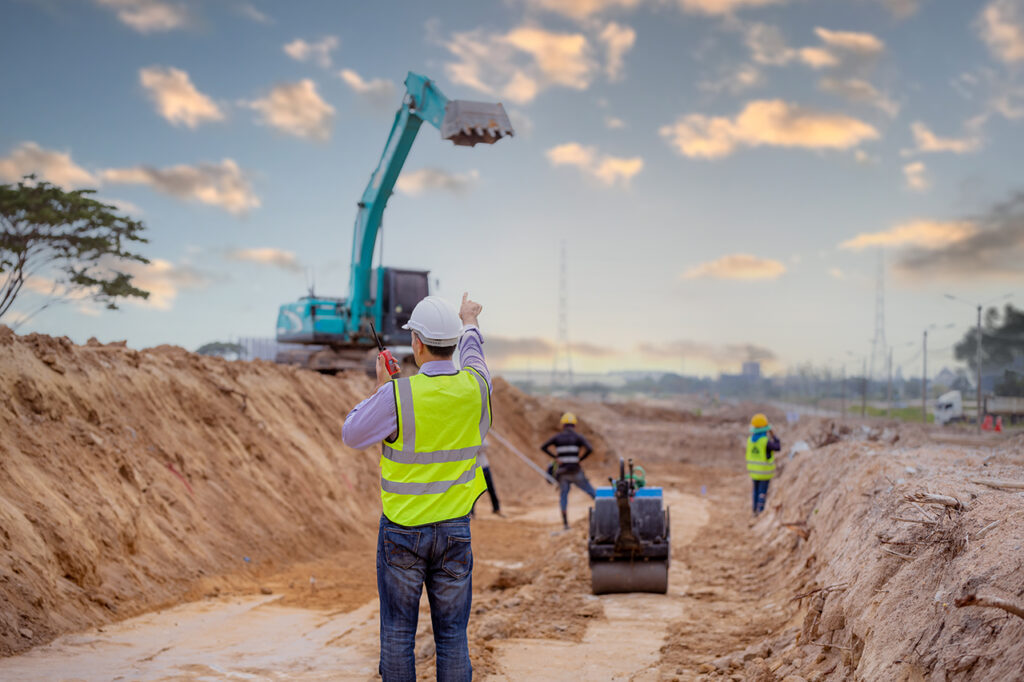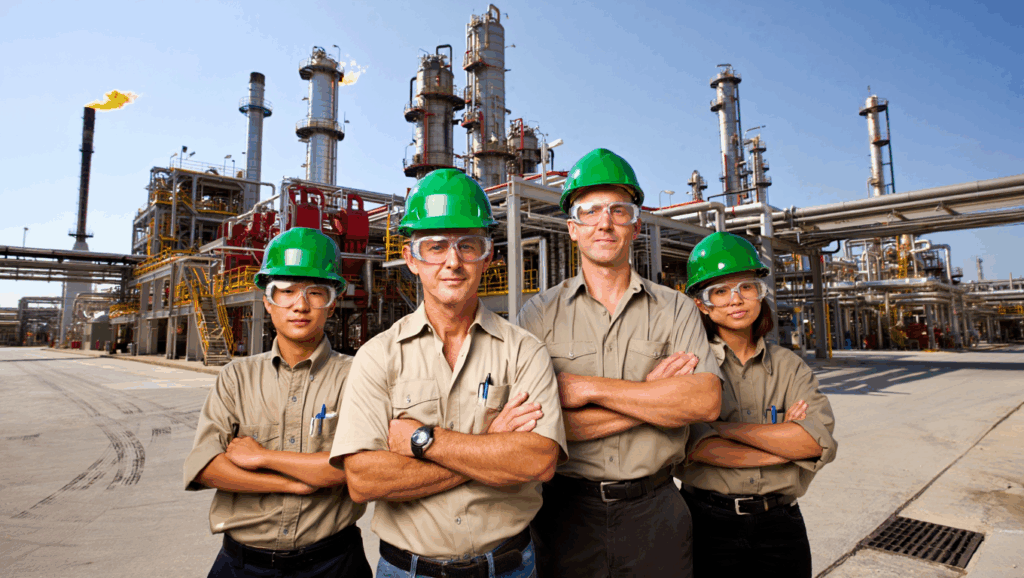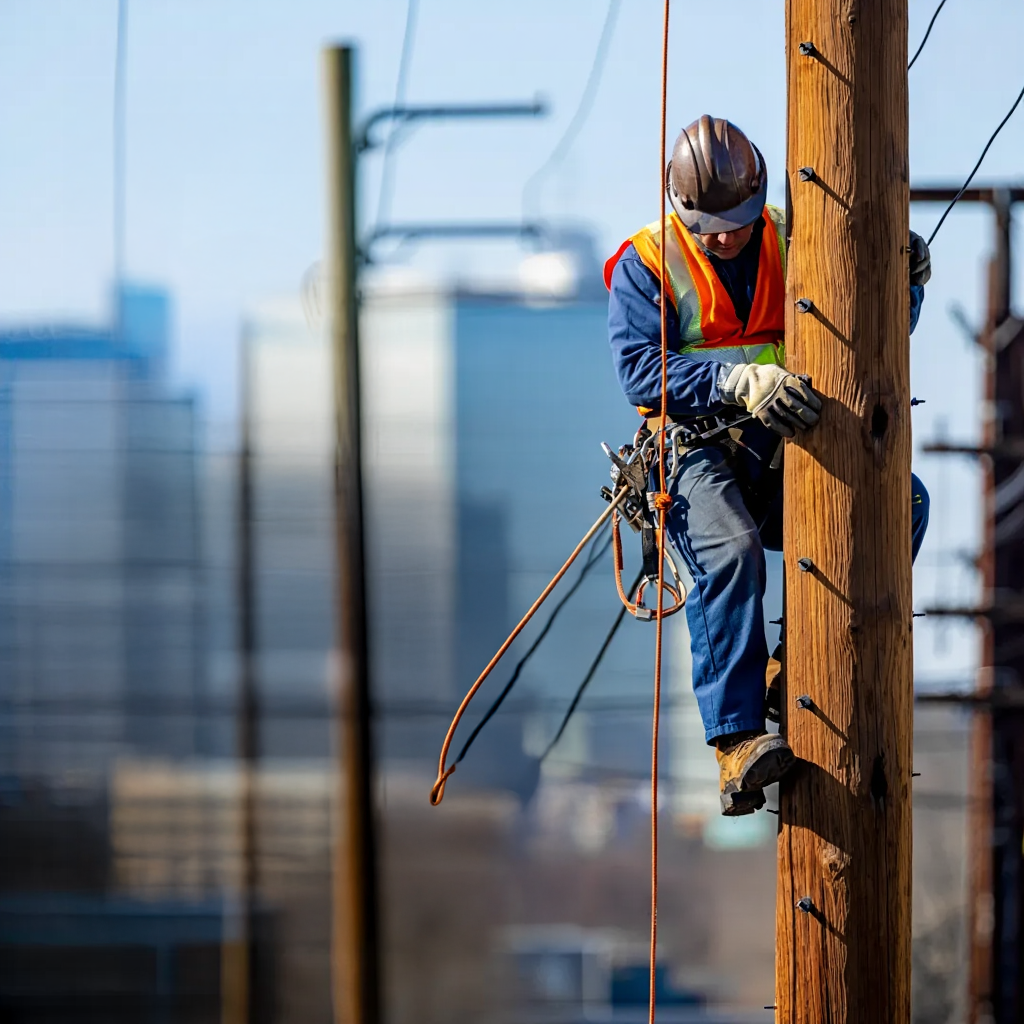The construction industry is one of the most dangerous sectors in the world.
According to the U.S. Bureau of Labor Statistics, over 20% of all workplace fatalities in 2023 occurred in construction. That’s 1 in every 5 workplace deaths. Falls, electrocutions, and equipment-related injuries continue to top the list of causes, despite decades of safety protocols and OSHA regulations.
So here’s the hard truth: traditional methods aren’t enough. Compliance checklists and safety posters taped to trailer walls won’t protect workers on scaffolds or in trenching zones. Safety isn’t a policy, it’s a culture, a process, and increasingly, a technology-driven system.
If you’re a safety manager, site supervisor, project executive, or EHS officer, this guide is built for you. We’re breaking down exactly how to improve health and safety in the construction industry—with seven proven strategies, real-world best practices, and a look at how modern health and safety management platforms like Field1st are transforming construction safety into a proactive, data-driven discipline.
Key Safety Risks in the Construction Industry
Construction sites are inherently high-risk environments. Moving parts, elevated surfaces, unpredictable variables, and tight deadlines make them a perfect storm for accidents if not properly managed.
Here are the most common and dangerous hazards to focus on:
- Falls from heights: Lack of guardrails, improper scaffolding, and missing fall protection systems cause the most fatalities.
- Electrical hazards: Exposed wires, contact with overhead lines, and faulty equipment are constant threats.
- Heavy machinery accidents: Cranes, bulldozers, and lifts can cause severe injury if improperly handled or if blind spots go unchecked.
- Slips, trips, and falls: Uneven terrain, scattered tools, and poor housekeeping often lead to minor incidents that spiral into bigger problems.
Regulatory Compliance & Legal Responsibilities
Agencies like OSHA and international standards like ISO 45001 mandate strict safety measures in construction. Compliance isn’t optional, it protects lives and shields your company from lawsuits, fines, and lost contracts. Failing to comply can mean penalties of $15,625 per violation (and more for willful offenses), skyrocketing insurance costs, and work stoppages.
Challenges with Traditional Safety Management
Paper-based safety programs, manual inspections, and disconnected communication channels lead to gaps in safety awareness. Critical reports are delayed. Hazards go unlogged. Near misses are never analyzed. Simply put, you can’t fix what you can’t see, and traditional methods leave too many blind spots.
Let’s fix that.
7 Strategies to Improve Health and Safety in the Construction Industry
Improving safety isn’t about adding more rules. It’s about changing how teams think, act, and respond on the jobsite—every day, every shift. Safety failures rarely happen because someone didn’t know the rules. They happen because the system to enforce those rules was broken, ignored, or too slow to respond.
Construction remains one of the most high-risk industries in the world. Crews are working at height, around heavy machinery, in unpredictable environments—all while racing deadlines. A single overlooked hazard can become a life-altering incident in seconds. That’s why surface-level fixes won’t cut it. You need systems. Habits. Real-time visibility. And tools that let your safety processes scale with your projects.
This isn’t about micromanaging every step—it’s about empowering teams to take ownership of safety, creating workflows that adapt to changing risk, and using the right technology to stay one step ahead of accidents. Safety isn’t a “compliance task.” It’s an operational strategy. And when done right, it doesn’t just protect your crews—it boosts productivity, reduces insurance costs, and builds a culture that wins long-term.
Below are seven proven strategies construction leaders can implement immediately to reduce incidents, strengthen compliance, and protect their teams—while laying the foundation for a proactive, modern safety culture.
1. Build a Strong Safety Culture
Safety starts at the top. If leadership doesn’t prioritize it, neither will the crews. That’s why building a strong safety culture is the foundation of any successful safety program.
- Lead by example: Supervisors and foremen must follow the same rules they expect of their teams.
- Encourage ownership: When workers feel responsible for not just their safety—but their coworkers’—accidents drop.
- Create feedback loops: Use anonymous reporting systems or “open door” policies for workers to flag unsafe conditions without fear of punishment.
- Reward safe behavior: Consider incentive programs for incident-free milestones or recognizing individuals who speak up about hazards.
A true safety culture goes beyond compliance. It turns protocols into habits and habits into reflexes.
2. Conduct Frequent Safety Audits & Risk Assessments
Audits and risk assessments are your eyes in the field. They uncover unsafe behaviors, identify system failures, and help prevent incidents before they happen. But doing them manually? That’s where most companies fall short.
This is where Field1st becomes a game-changer.
- Automate recurring safety audits across projects.
- Digitally log observations, assign corrective actions, and track completion.
- Access a centralized dashboard that highlights trends, high-risk zones, and inspection performance.
With Field1st, you’re not waiting for an incident to trigger a review—you’re always monitoring, always improving. It’s like having a full-time safety inspector at every jobsite, every day.
Read Also: Guide to Health and Safety Audit
3. Provide Comprehensive Worker Training & Safety Awareness
No training = no protection. It doesn’t matter how many policies you post if your crew doesn’t understand or remember them.
Invest in ongoing training, not just onboarding. Why?
- Construction sites evolve constantly—what was safe last month might be dangerous today.
- New hires need more than a quick rundown—they need hands-on workshops, toolbox talks, and site-specific training.
- Leverage VR simulations, real-world drills, and dynamic refresher courses to reinforce learning.
Tip: Include visual aids, bite-sized videos, and multilingual materials to ensure training reaches everyone effectively.
Better training means safer crews—and fewer calls to the emergency room.
4. Proactive Hazard Identification & Risk Assessment
Reacting to a hazard after it’s caused an injury is too late. The goal is proactive prevention—identifying and mitigating risks before someone gets hurt.
Field1st equips safety teams with real-time hazard tracking and AI-powered risk prediction. Here’s how it works:
- Field crews log potential hazards through their mobile device—offline or online.
- AI analyzes inputs from across job sites to flag patterns or hotspots.
- Supervisors get real-time alerts and risk scoring to prioritize action.
This turns scattered observations into a predictive risk model that evolves with your sites. You’re not just documenting danger—you’re outsmarting it.
5. Enhance Communication & Emergency Preparedness
Poor communication is a silent killer. From unclear evacuation plans to missed hazard warnings, small gaps lead to big consequences.
Every jobsite should have:
- Clear chains of command
- Mobile alerts for changing site conditions
- Instant access to emergency protocols
- Two-way feedback loops so workers can report issues on the fly
Modern platforms like Field1st enable instant alerts, on-site notifications, and real-time issue reporting, giving crews the tools to respond fast when emergencies strike.
Imagine a worker collapses in a confined space from heat exhaustion. Instead of yelling for help or running for a radio, a nearby crew member uses Field1st to trigger an emergency alert. Site leadership is notified instantly, the worker’s location is pinned, and response protocols are pushed out in real time. Help is dispatched within seconds—not minutes.
That’s the power of acting quickly—not reacting blindly. Efficient emergency response doesn’t just reduce risk—it saves lives.
6. Stay Compliant with OSHA & Industry Regulations
Regulatory compliance is more than a checklist—it’s the minimum standard of safety. Yet many construction firms struggle to keep up with OSHA updates, local codes, and industry-specific rules.
Common challenges include:
- Outdated paperwork and lost documentation
- Miscommunication between teams
- Lack of audit trail for inspections and incidents
Field1st simplifies compliance by eliminating the stress, delays, and disorganization that come with manual reporting. It automates OSHA logs and generates ISO 45001-ready documentation, helping safety managers stay ahead of evolving regulations without drowning in spreadsheets. Every activity—inspections, incidents, corrective actions—is timestamped and stored, giving you audit-ready records at a moment’s notice.
The platform’s real-time compliance dashboard provides a clear snapshot of where you stand—flagging gaps before they become violations. No more scrambling when an inspector walks on site. No more missing paperwork. Just one click, and you’re ready.
Even better, Field1st stays current with regulatory changes, so you don’t have to. Whether OSHA updates a reporting rule or your state modifies site safety requirements, Field1st adapts—keeping your business compliant, your records clean, and your team protected from costly fines and shutdowns.
Related Read: Best Safety Audit Software for OSHA Compliance
7. Implement Construction Safety Management Software
Finally, the most effective strategy is one that ties all the others together: implementing a construction safety management platform.
Field1st is more than an app—it’s a command center for all your safety operations:
- Automated inspections
- Real-time hazard alerts
- Training and incident logs
- Predictive analytics
- Compliance tracking
It replaces paper trails with dashboards, guesswork with data, and delays with instant visibility. For teams managing multiple crews, sites, or regions, Field1st brings every safety protocol under one roof.
Instead of reacting to safety failures, you’re preventing them.
Construction Site Safety Starts with Field1st
Improving health and safety in construction isn’t just about avoiding injuries—it’s about building a culture of awareness, accountability, and continuous improvement.
The biggest challenges construction companies face—hazard blind spots, regulatory overload, outdated tools, poor communication—are solvable. But they require a shift from manual, reactive systems to modern, tech-enabled safety operations.
That’s where Field1st comes in.
Built by real-world construction and utility professionals, Field1st gives safety teams the tools to:
- Identify risks before they escalate
- Run smarter, faster audits
- Automate compliance and incident tracking
- Train workers on-site with embedded learning tools
- Track everything in real-time—from mobile, tablet, or desktop
It’s already used by high-risk industries like energy, infrastructure, and field services—and it’s ready to help your crews work safer, smarter, and more efficiently.
Real-World Results: How Teams Are Using Field1st on the Ground
Field1st isn’t theory—it’s live, on the ground, and already making jobsites safer across the country.
Utility contractors use it to track near-misses across multiple crews in real time—spotting repeat hazards before they become recordables. One civil contractor reduced audit times by 40% within the first 60 days. Another project manager used Field1st’s mobile reporting to identify a site-wide PPE compliance gap, correct it the same day, and avoid what could’ve been a major violation.
Field1st also helped a regional infrastructure firm streamline OSHA documentation during a surprise inspection. Instead of scrambling, they had every log, timestamp, and corrective action ready—digitally signed, audit-proof, and up to date. The inspector walked off-site impressed.
These are the kinds of wins that come from shifting to a smarter, integrated safety system. Not just fewer incidents—but more confidence, smoother operations, and a culture that owns safety at every level.
See Field1st in Action
If you’re serious about improving health and safety in the construction industry, it’s time to trade spreadsheets for systems—and stress for certainty.
Get started with Field1st today and see how proactive, data-driven safety can protect your teams, your reputation, and your bottom line.





